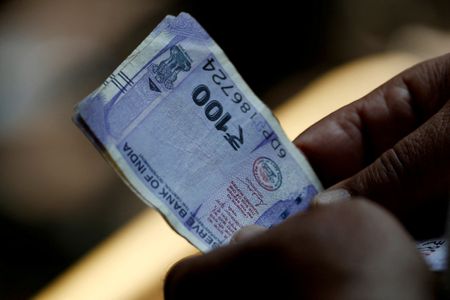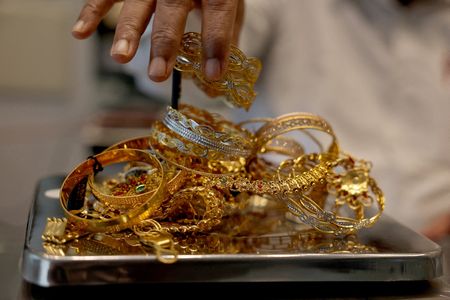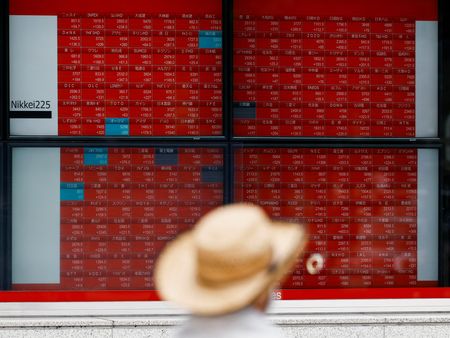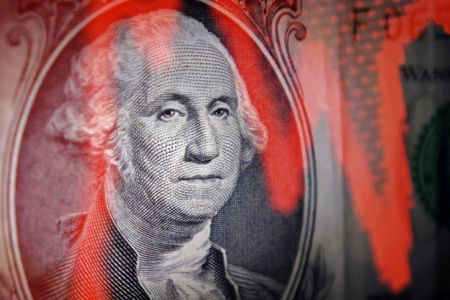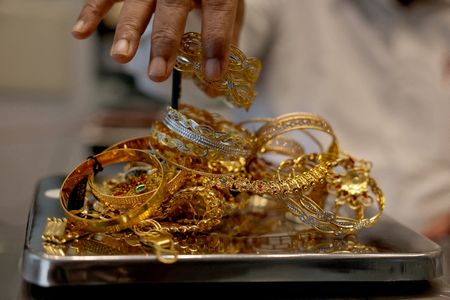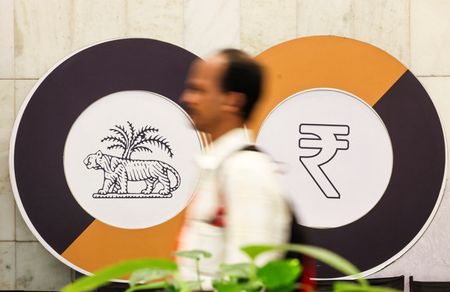By Jaspreet Kalra and Dharamraj Dhutia
MUMBAI (Reuters) -The Indian rupee slipped to a record low and government bond prices rose on Tuesday, as the appointment of career bureaucrat Sanjay Malhotra as the next Reserve Bank of India (RBI) governor raised expectations of rate cuts.
The rupee fell to 84.8550 per U.S. dollar, surpassing its previous all-time low of 84.7575 hit last week, while the 10-year bond yield fell 2 basis points to 6.6954%. Yields move inversely to bond prices.
India’s five-year overnight index swap, a gauge of interest rate expectations, declined to a 3-month low of 5.97%.
The RBI likely stepped in to support the rupee, traders said.
Malhotra, currently the revenue secretary to the finance ministry, has been appointed as the RBI governor for a three-year term starting Dec. 11 as the six-year term of outgoing governor Shaktikanta Das ends on Tuesday.
Malhotra has worked in financial services, power, taxation and information technology over his three-decade career.
He takes charge at a time when the Indian economy’s growth has slowed while inflation remains elevated, complicating the outlook for monetary policy.
Restoring a balance between inflation and growth in India remains an important task for the RBI, Das said in Mumbai on Tuesday.
“One has to understand the turf, all perspectives and do what’s the best for the economy,” Malhotra said in New Delhi.
Das’ exit, economists said, could add a dovish tilt to India’s monetary policy committee as Das and RBI Deputy Governor Michael Patra were seen as the most hawkish members of the six-member rate-setting panel.
Patra’s term concludes in mid-January and the government is looking for a replacement.
Three new external members on India’s rate-setting panel were replaced in October after the terms of the previous members ended.
“With Malhotra’s appointment, there is an expectation that there will be a tilt towards supporting growth,” said Anshul Chandak, head of treasury at RBL Bank. “A February rate cut by the RBI seems more certain now.”
On Dec. 6, the RBI kept its key interest rate unchanged but lowered the cash reserves that banks must hold, effectively easing monetary conditions.
“If the RBI adopts a growth-focused monetary policy, as suggested by recent dovish expectations, narrowing interest rate differentials could weaken carry trade inflows and hurt the rupee,” a trader at a bank said.
The trader expects the rupee to decline to 86 by the end of March 2025.
(Reporting by Jaspreet Kalra; Editing by Mrigank Dhaniwala)

